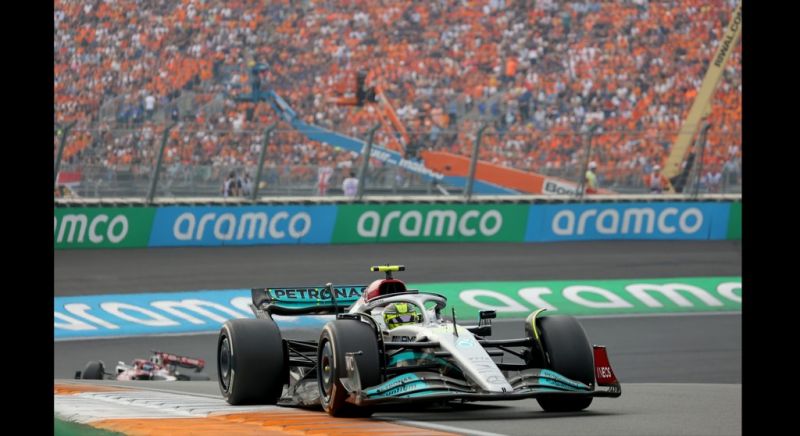It’s lap 60 of 72, and Lewis Hamilton is inconsolable over team radio. “I can’t believe you guys screwed me, man,” he shouted. “I can’t tell you how pissed I am right now.”
He’d just been passed by Max Verstappen for the race lead at the safety car restart, and as the Dutchman breezed into the distance, the Briton watched his slim victory hopes disappear with him.
He never really stood a chance once the safety car came out. Verstappen had a chance to pit for much fresher tyres, and when teammate George Russell did the same, there were no cars to shield Hamilton from the reigning world champion in a scenario eerily familiar to last year’s Abu Dhabi title decider.
But this year the frustration wasn’t borne of the anguish of a lost title. This was the pain of a man who’d just seen his best shot at a victory evaporate in an instant.
Mercedes has been off the pace all year. Sometimes the gap is small, as it was in Hungary last month, where both Mercedes cars mastered the circumstances to finish on the podium. Other times it’s enormous, like in Belgium last week, where they were two seconds off the pace in qualifying.
But at the Dutch Grand Prix Mercedes was back among the frontrunners for the first time this season. The W13, its strengths and weaknesses perpetually evading the grasp of its engineers, rolled out of its Zandvoort garage and was immediately quick.
“It’s like a mood swing,” Hamilton said after qualifying a close fourth. “It’s like the characteristics of a human being. You don’t know which side of the bed it’s going to get out of.”
The team backed the car to get out of the right side of the bed on Sunday and put all its chips on a one-stop strategy it knew could deliver it victory. Red Bull Racing, having lost some practice time to a gearbox problem on Friday, committed to make two stops.
The Mercedes car was flying, and by mid distance it was clear it had Verstappen under pressure. The Dutchman had to make one more stop and was guaranteed to rejoin the track behind both Mercedes cars, forcing him to fight to the finish.
But a series of safety interventions neutralised the race, gifting Verstappen the lead and undermining what had been a sharp and punchy race for Hamilton, one that had been deserving of greater reward than fourth.
“The guys were really, really on it,” Hamilton said once he’d cooled down after the race. “We are all on it and I really was hopeful that we were going to get a one-two together as a team, especially after not a great year
“I was just on the edge of breaking point with emotions.
“My apologies to the team, because I don’t even remember what I said, I just lost it for a second, but I think they know that there is just so much passion.”
Undoubtedly part of that emotion was that it’s deeply uncertain when - or whether - Hamilton will be in such a position again this year. If Zandvoort is the sort of track the car likes, there aren’t too many similar circuits coming up on the calendar.
This weekend’s Italian Grand Prix at Monza, for example, is unlikely to flatter the car in the same way.
“As weird as it sounds for a high-tech science lab on wheels, the data don’t seem to correlate this year,” Mercedes boss Toto Wolff admitted. “We are gathering data on the track in order to put the puzzle together.
“We added a few new bits of the puzzle to comprehend for next year, but I don’t expect weekends like this every single weekend to the end of the year.”
Completing that puzzle is the goal, and while the team is now targeting the complete picture in 2023, the prospect of enough pieces being in place to recapture that almost glorious afternoon in Zandvoort will remain tantalising until November.
“It was finally there within our grasp,” Hamilton said. “If this can be the same in the future races, we’re going to be continuing to breathe down their necks and we’re going to get that win.”








